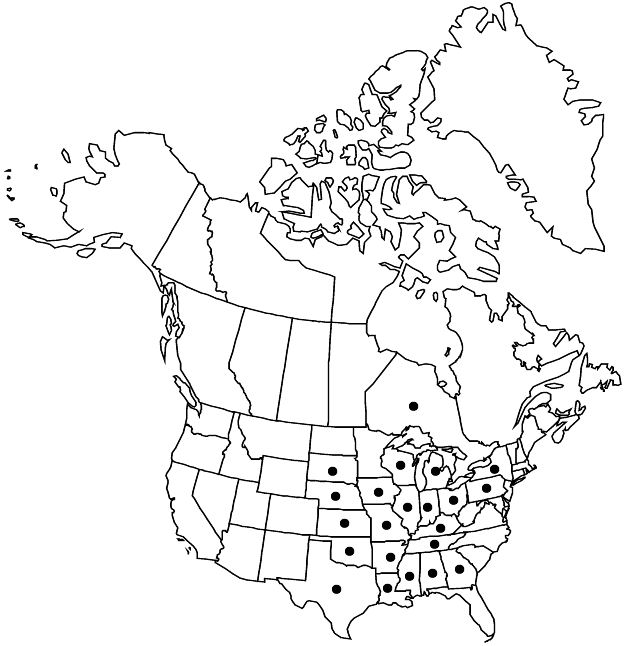Cornus drummondii
Cornus-Arten, 20. 1845.
Shrubs or trees, to 6 m, flowering at 1.5 m; rhizomes present. Stems solitary, 1–6 dm apart; bark pinkish gray, appearing braided, becoming corky, checkered with square or rectangular plates 2–5 mm wide; branchlets yellow-green abaxially, pink-maroon adaxially, densely erect-hairy when young; lenticels inconspicuous on new growth, protruding and splitting longitudinally on 2d year branches; pith brown, white, or tan. Leaves: petiole 8–25 mm; blade lanceolate to ovate, 2–12 × 1.2–7.7 cm, base cuneate, truncate, or cordate, apex abruptly acuminate, abaxial surface pale green, hairs curved upward, dense, adaxial surface gray-green, hairs curved upward or appressed; secondary veins 3–4(–5) per side, most arising from proximal 1/2. Inflorescences flat-topped or convex, 3–8 cm diam., peduncle 20–40 mm; branches and pedicels pink or red, fading yellow when dried, central part of pedicels white after fruit falls. Flowers: hypanthium densely appressed-hairy; sepals 0.4–1.3 mm; petals white, 2.3–3.2 mm. Drupes white, globose or subglobose, 4–7.5 mm diam.; stone subglobose, 3–6 mm diam., smooth or slightly grooved, apex rounded. 2n = 22.
Phenology: Flowering Apr–Jul; fruiting Aug–Oct.
Habitat: Limestone barrens, limestone outcrops, dry woodlands, rocky stream banks, prairies, old fields, roadsides, meadows, swamp margins.
Elevation: 0–1500 m.
Distribution

Ont., Ala., Ark., Ga., Ill., Ind., Iowa, Kans., Ky., La., Mich., Miss., Mo., Nebr., N.Y., Ohio, Okla., Pa., S.Dak., Tenn., Tex., Wis.
Discussion
Several workers considered the erect hairs on the adaxial leaf surface of Cornus drummondii and C. asperifolia to indicate relatedness, and treated these two species as one (J. Torrey and A. Gray 1838–1843; Gray 1856; J. M. Coulter and W. H. Evans 1890; W. Wangerin 1910). However, A. Wood (1861), following W. T. Feay, linked C. asperifolia with C. foemina, and J. S. Wilson (1964) also segregated the southern coastal plain rough-leaved dogwood from the continental rough-leaved dogwood as C. foemina subsp. microcarpa (Nash) J. S. Wilson and C. drummondii, respectively.
J. K. Small described Cornus priceae from Bowling Green, Kentucky, with small drupes and stones. However, extensive collections from the type locality and examination of the type material revealed that the drupe and stone sizes are within the normal range of variation of C. drummondii.
Selected References
None.